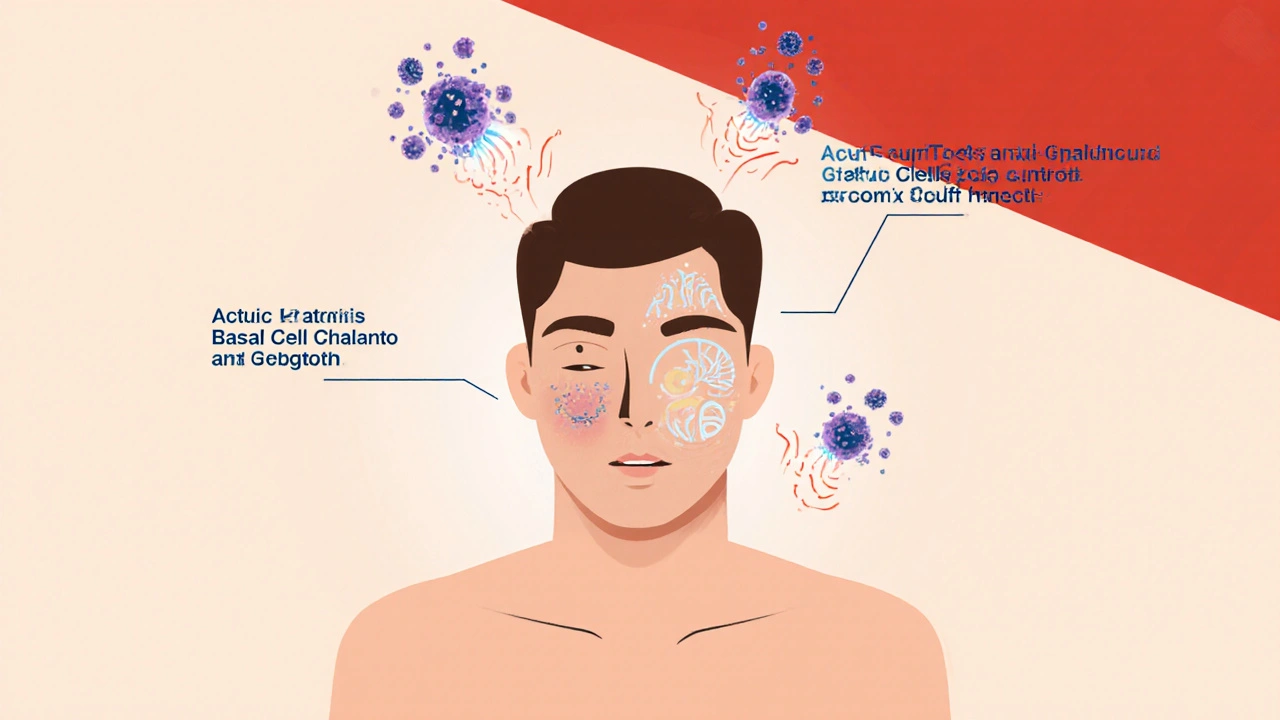Imiquimod: What It Is, How It Works, and What You Need to Know
When your skin develops abnormal growths—like genital warts or rough, sun-damaged patches called actinic keratosis—your doctor might recommend imiquimod, a topical immune response modifier used to treat certain skin conditions by triggering the body’s own defenses. Also known as a topical immunotherapy, it doesn’t kill the virus or cells directly. Instead, it tells your immune system to find and destroy them. This makes it different from creams that burn or freeze tissue. It’s applied right to the skin, usually a few times a week, and works over weeks, not days.
Imiquimod is most commonly used for three things: treating genital and anal warts caused by HPV, clearing actinic keratosis (a precancerous skin condition), and sometimes managing very early-stage basal cell carcinoma when surgery isn’t an option. It’s not for every skin problem, but for these specific cases, it’s been a game-changer. Unlike laser treatments or cryotherapy, it doesn’t leave big scars, and it can treat areas that are hard to reach. People with weakened immune systems, like those with HIV or on immunosuppressants, often benefit because it boosts local immunity instead of relying on the body’s overall strength.
It’s not without side effects. Redness, swelling, itching, and flaking are normal—sometimes intense. That’s not a sign it’s failing; it’s often a sign it’s working. But if the skin breaks open, bleeds, or becomes painfully sore, you should check in with your doctor. It’s also not something you use without a prescription. You can’t buy it over the counter, and fake versions online are risky. Always get it from a licensed pharmacy. The treatment timeline varies: for warts, it might take 8 to 16 weeks. For actinic keratosis, 2 to 4 weeks of twice-weekly use is typical. You need to stick with it, even when your skin looks worse before it gets better.
What’s interesting is how imiquimod connects to other treatments you might see in our posts. It’s part of the same conversation as topical immunotherapy, a class of treatments that activate the skin’s immune system to fight disease, which includes newer drugs like cemiplimab for advanced skin cancers. It also relates to HPV, the virus behind most genital warts and some cervical and throat cancers, which vaccines like Gardasil help prevent. And it ties into discussions about skin cancer prevention, including early detection of precancerous changes before they become dangerous—something we cover in posts about sun damage, DEXA scans for bone health, and even how chronic inflammation raises cancer risk.
You won’t find imiquimod in every post here, but you’ll see its themes repeated: how the body fights disease from within, how medications can work smarter than they seem, and how small daily actions—like applying a cream—can change long-term outcomes. Below, you’ll find real-world advice on managing side effects, understanding how drugs interact with your immune system, and making sense of treatments that don’t always feel like treatment at first glance. Whether you’re using imiquimod now, considering it, or just curious about how your skin fights back, these posts give you the facts without the fluff.
Published on Nov 18
8 Comments
Compare Imiquad Cream (imiquimod) with alternatives like 5-FU, cryotherapy, PDT, and surgery for treating skin conditions. Learn which option works best for actinic keratosis, warts, and basal cell carcinoma.

